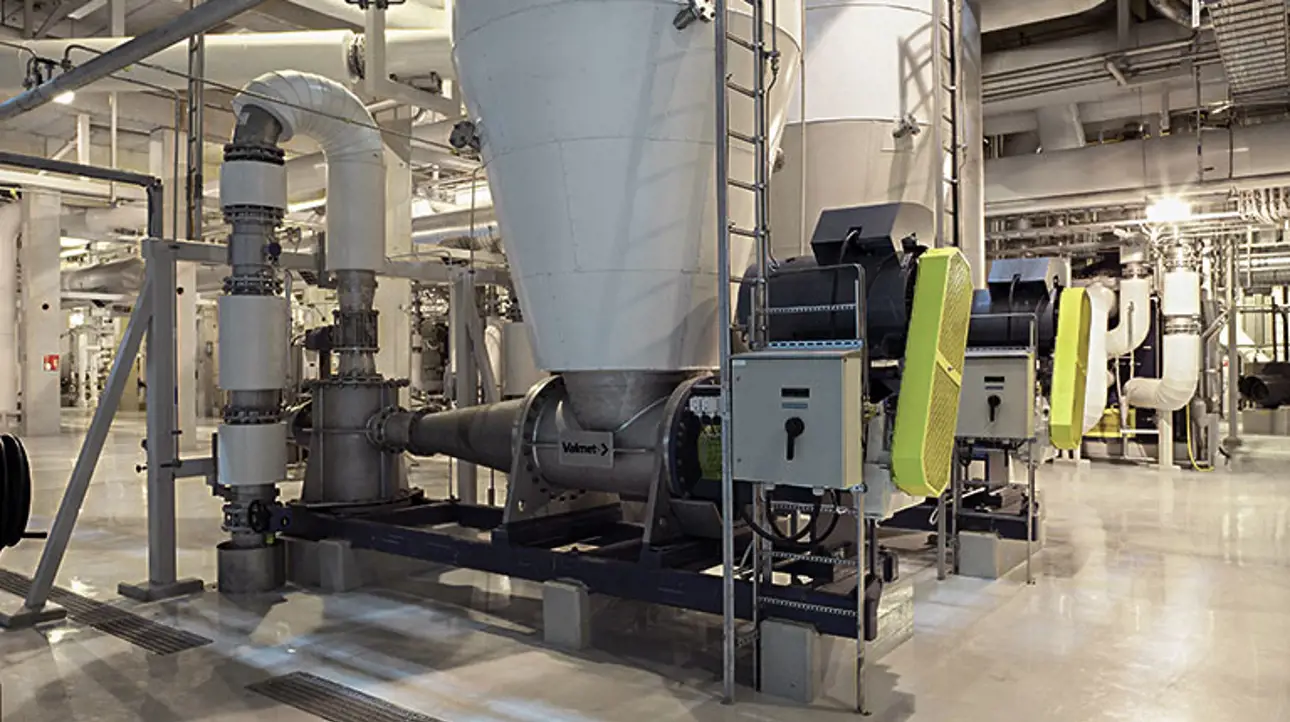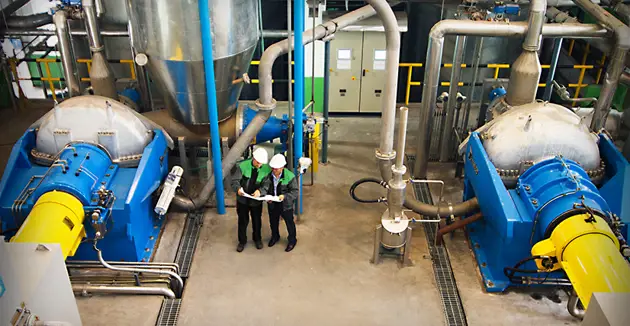Pressure cyclone

A pressure cyclone is designed to separate steam from the pulp. The de-steamed pulp is transported to a latency tank and the steam is recycled in the process.
The surplus steam from the refiner blows the pulp to the top of the pressure cyclone, where it is fed in tangentially under pressure. The pulp is separated by the centrifugal force and by sedimentation. The steam goes upwards in the center of the cyclone and out to a heat recovery system. A scraper prevents pulp to get stuck on the inside of the jacket. In the bottom of the cyclone, a discharge screw feeds the pulp to a latency tank. The pulp plug and the counter-pressure device seal against steam pressure in the cyclone.
The pressure cyclone consists of a cyclone with steam/pulp inlet and a steam outlet, a jacket scraper, a plug screw feeder and a counter-pressure device in the bottom.
The scraper is sealed with optional packing box or mechanical sealing and is driven by an AC-motor via a worm gear unit. The screw shaft is sealed with a mechanical sealing, journaled by oil-lubricated bearings and is driven by an AC-motor via a shaft-mounted gear reducer and a belt drive.
Material available for download |
||
|---|---|---|
| Pressure cyclone | Cyclone Discharge Screw | |

Our expertise is at your service
Our focus is to bring your performance forward. Get in touch with us through our website, or through your local Valmet office.
Contact us